First, Background
In recent years, with the rapid development of the economy and the policy impact of the transformation and upgrading of the national manufacturing industry, the traditional manufacturing industry is in a difficult state. Strategically minded manufacturing companies, especially the high-end automotive electronics manufacturing industry, are beginning to explore advanced application areas for RFID production traceability systems.
RFID anti-counterfeiting traceability technology breaks through the previous anti-counterfeiting traceability technology ideas, with difficult to forge, easy to identify, information feedback, password uniqueness, password confidentiality, one-time use and other characteristics. Guangzhou Ruifengde Information Technology Co., Ltd. uses RFID technology anti-counterfeiting traceability, compared with laser anti-counterfeiting traceability, digital anti-counterfeiting traceability, etc., its advantages are: each tag has a unique ID number, this unique ID is written to the ROM when making the chip , can not be modified, difficult to imitate; No mechanical wear, anti-fouling; The reader has a physical interface that is not directly open to the end user, ensuring its own security; In terms of data security, in addition to the password protection of electronic tags, the data part can use a variety of security algorithms to achieve security management; The communication between the reader and the electronic tag requires multiple mutual certification processes.

Second, the RFID quality traceability system is composed
The RFID quality traceability system strictly follows the internationally accepted commodity management and commodity traceability framework when designed, and at the same time realizes the internal and external traceability of various related parties such as commodity regulatory departments, customs, importers, manufacturers, distributors at all levels, retailers, various warehouses and transporters. The system design fully considers the correlation between the logistics and information flow involving the traceability unit, and the design of the product code not only follows the corresponding rules of the International Article Code Society (GSI), but also fully considers the management attributes of the goods. The system ensures the successful implementation of quality anti-counterfeiting traceability from two aspects: technical framework and operation management framework.
RFID quality traceability system is for the anti-counterfeiting traceability needs of goods such as drugs, tobacco and alcohol, combined with the characteristics of commodity processing, production, circulation and consumption, the use of advanced RFID automatic identification technology, RFID electronic tags as anti-counterfeiting traceability information carrier, is the integration of RFID technology, A large-scale information system integrating computer network technology, modern communication technology, database technology, and software engineering technology.
1. Quality traceability
Material traceability: The part number, supplier and batch information used in the product can be queried through the finished product tracking code. And through the batch information reverse query out which products the problematic batch of materials are applied to, and which customers are sold to;
Employee traceability: can reverse query the production batch, personnel and time of the product through the finished product tracking code;
Quality inspection and traceability: through the finished product tracking code, query the initial product quality testing information and repair records.

2. Supply chain control
Supply chain control takes raw materials, semi-finished products and finished products as the control object, and the process involves raw material procurement and warehousing, production picking and returning, finished product warehousing, sales and warehousing, material inventory, packing and loading association, etc.
Benefits of system implementation:
Inventory management visualization: “what”, “where”, “how much”, can be accurately reflected through the supply chain module
Real-time inventory management: Sales/production/purchasing/management departments can see real-time inventory.
Warehouse management resume: Can achieve finished product batch tracking, detailed recording of each batch of products sent to which customers.
Traceability of material management: Raw material batch tracking can be realized, and the batch of raw materials can be recorded in detail which batch of raw materials are used for each batch of products.
Intelligent material management: For SMT loading, it can be verified by PDA scan code to avoid wrong materials
FIFO (First-In, First-Out): Ensures first-in, first-out access for raw materials, semi-finished products, and finished products.
Efficient and error-free inventory: Through PDA scan code inventory, a lot of manpower savings, and avoid manual errors.
(1) Supply chain control – procurement into storage
The purchase of warehousing needs to be inspected before it can be put into storage. For products that are shipped by PCS, an order generates a batch number label, and the label data is directly read into the warehouse after passing the inspection; For products stored in the package, a package generates a batch number label, and the inspector scans the package label through PDA scanning to record the number of packages that are extracted. The system automatically calculates the exact amount of inbound when it is put away.
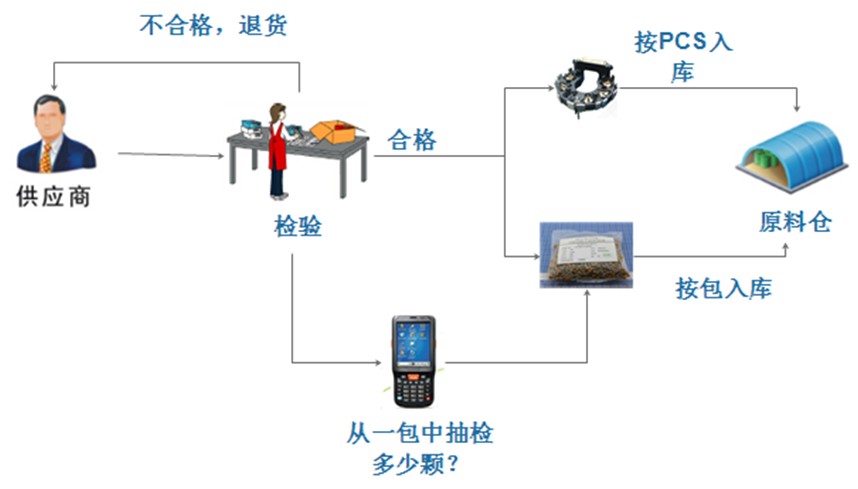
PC-side interface

PDA operation raw material storage
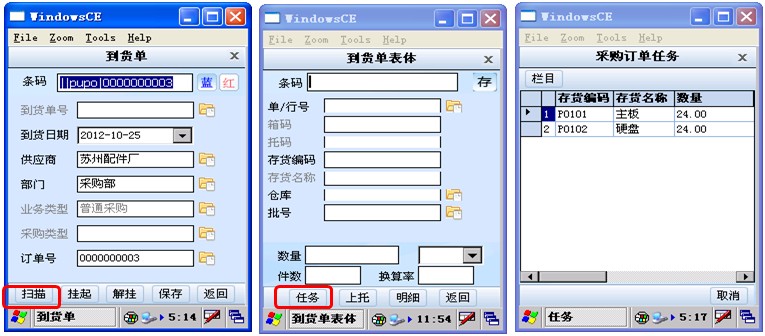
(2) Supply chain control – picking and returning
For picking and unloading at the production site, the raw material batch number is scanned and the quantity is entered through the PDA; Semi-finished products and finished products that are completed and put into storage are also recorded through PDA scanning labels, and the actual consumption of raw materials at the production site is realized by backflush picking.
Benefits: Through the PDA scan code and wifi real-time transmission, instead of manual picking and unloading, not only improve the operation efficiency, but also avoid human error, to ensure that all kinds of warehouse accounts are consistent.

PDA scan code picking
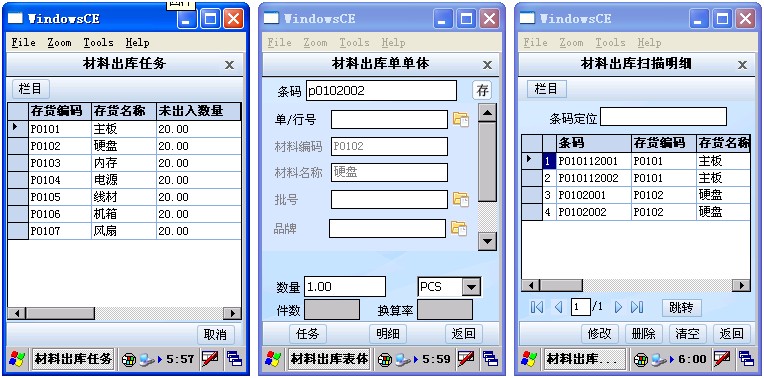
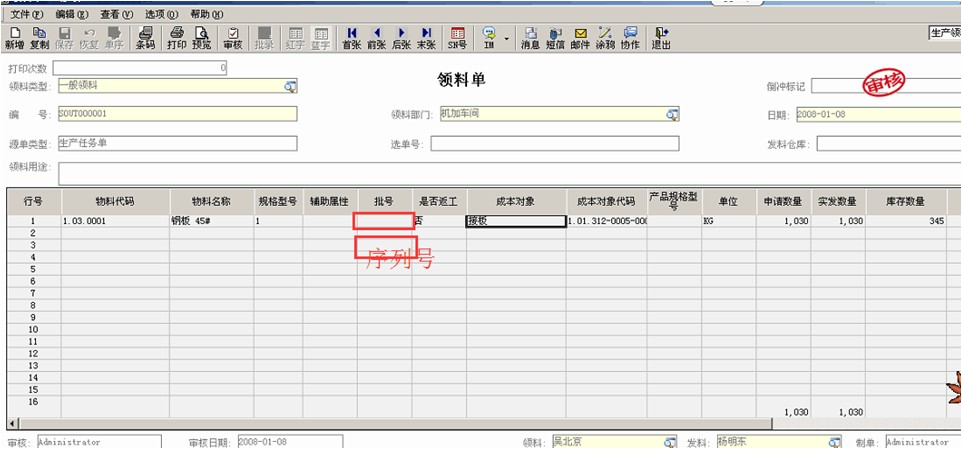
(3) Supply chain control – packaging correlation
PDA scan code out of the warehouse, to ensure that the product traceability code is associated with sales orders and outbound orders, paving the last journey for future quality traceability;
The transfer of goods in the main warehouse sub-warehouse is verified through the PDA scan code to ensure that the transfer of accounts and materials is consistent;
Multi-layer packaging code binding, loading only needs to scan the highest packaging level barcode, to achieve efficient loading;
Strict raw code assignment logic, through the traceability code to the multi-layer packaging layer by layer reverse traceability.
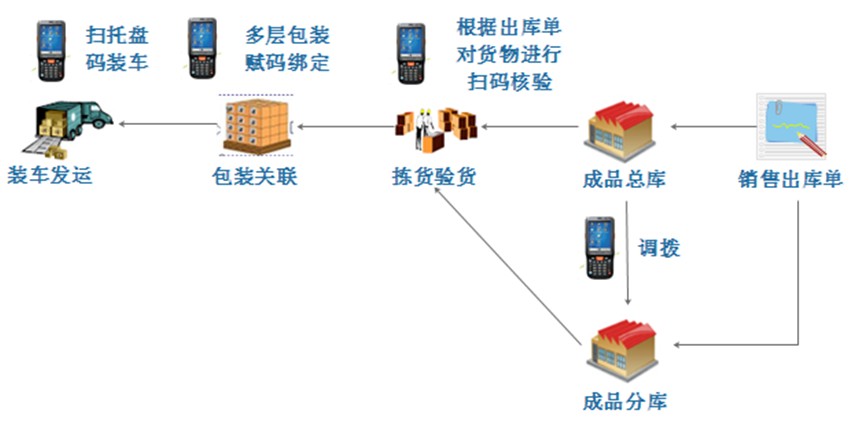
PDA scan code dialing interface
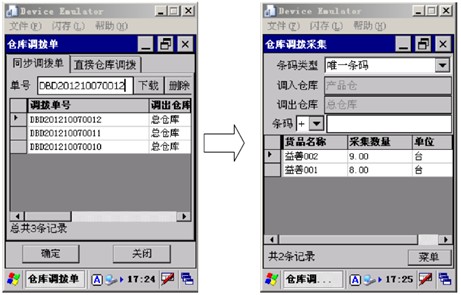
PDA scan code finished product out of the library interface
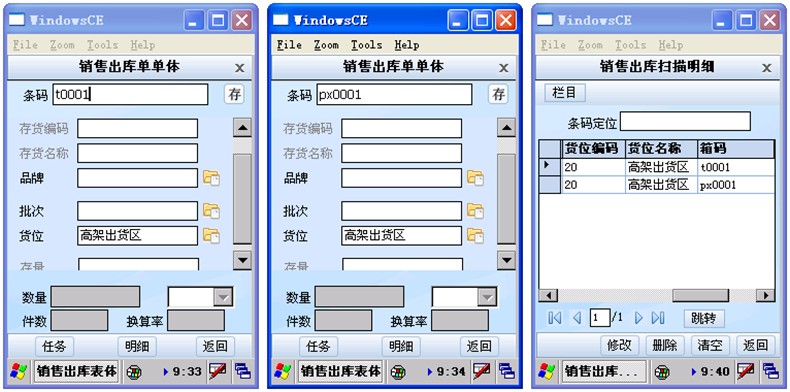
(4) Supply chain control – packaging association
Controller ECU, buzzer, display, sensor four items to form a small box, printer out of the box code label, workers label and scan the box code, began to pack and scan the single product for boxing and scanning entry, to be loaded a box, PDA binding, upload data. Packaging associated site, through PDA scanning input and binding of parent-child packaging codes.
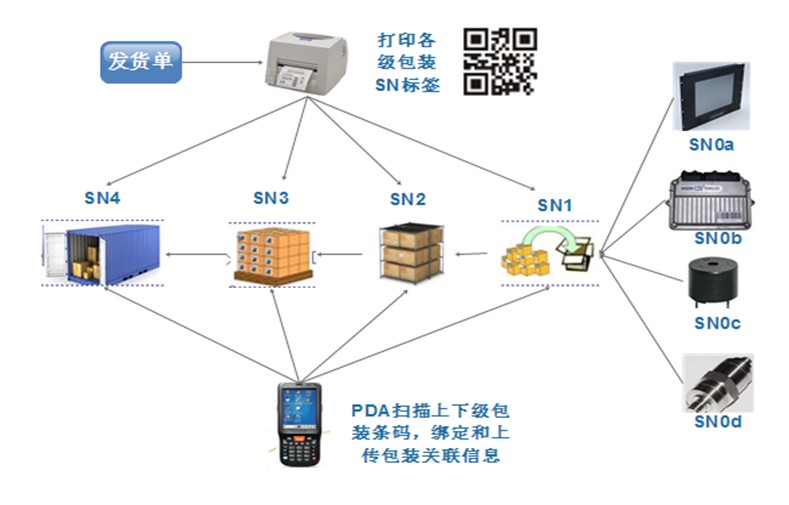
(5) Supply chain control – inventory
PDA associated with the background system inventory plan, the various types of warehouses for scanning code inventory, recording the number of real disks, and uploaded to the system background, the system will automatically compare the number of accounts and the number of real disks, calculate the difference between the win or loss. Through regular inventory, we ensure that the company’s accounts are consistent and ensure the accuracy of financial accounting.
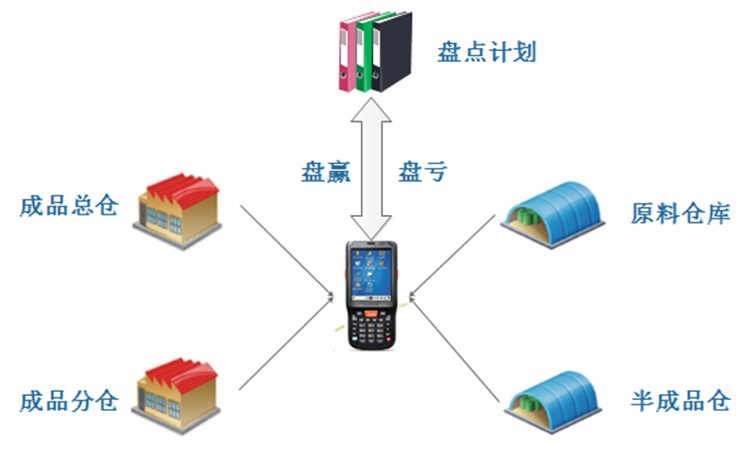
(6) Supply chain control – supplier management
The supplier management module provides RFID electronic label printing and PDA scan code management functions for core suppliers. The workflow is as follows:
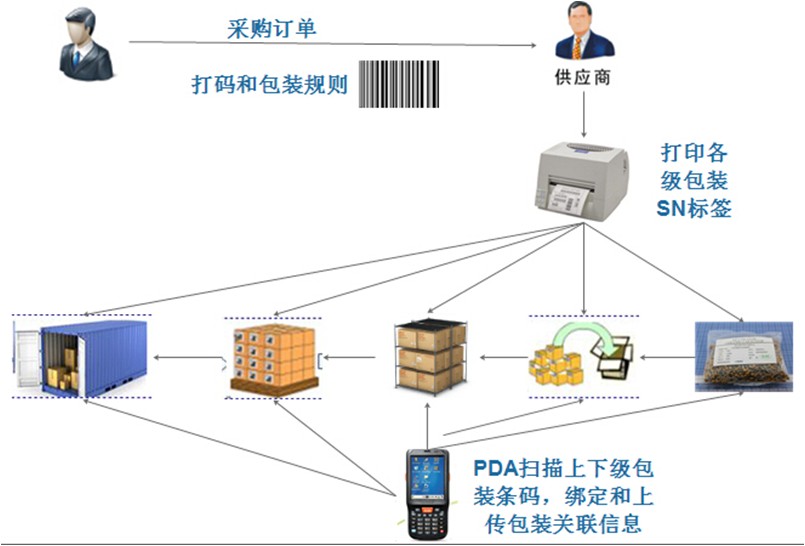
Through the supplier management module of Guangzhou Ruifengde, suppliers can obtain order information and RFID electronic tag printing and packaging specifications. Suppliers follow the standards set forth by The Guangzhou Foundation System for production, labeling, packaging and shipping. When shipping, the supplier uploads the delivery information through the PDA scan code, which can understand the shipment of raw materials in advance, and when the warehouse is checked, only the highest level of packaging RFID electronic tags (such as pallet RFID electronic tags) can be completed to complete the warehousing of a batch of goods.
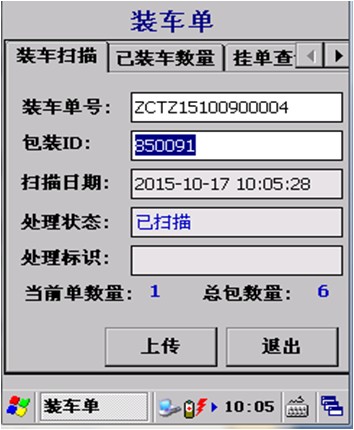
Third, the production process control
Production process control is the use of PDA equipment in different process routes, each work center, the scanning and input of workshop site data, and the batch number, serial number SN, operator and other key basic information uploaded to the bar code system background and K3 system. Data transmission is carried out with the help of wifi.
The above is the most basic and important part of the whole project, from raw materials, semi-finished products, finished products to record all production information in detail, for the quality traceability and information of future finished products to provide data basis.
(1) Implementation benefits
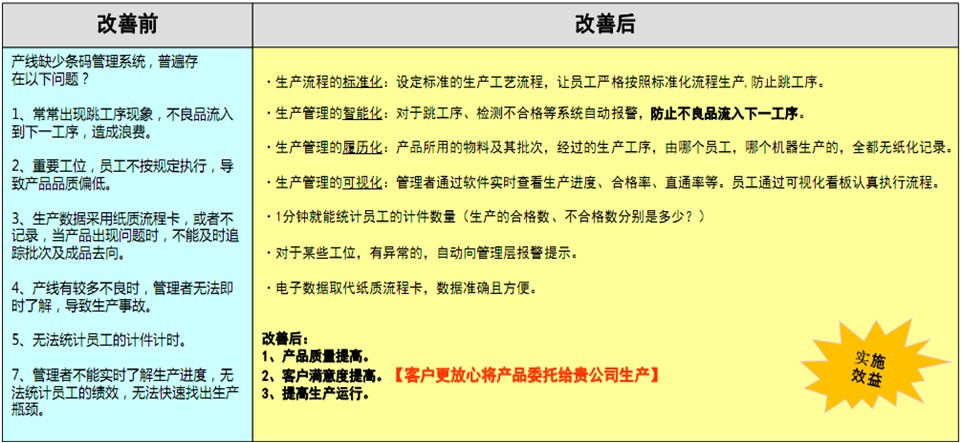

(2) On-site collection
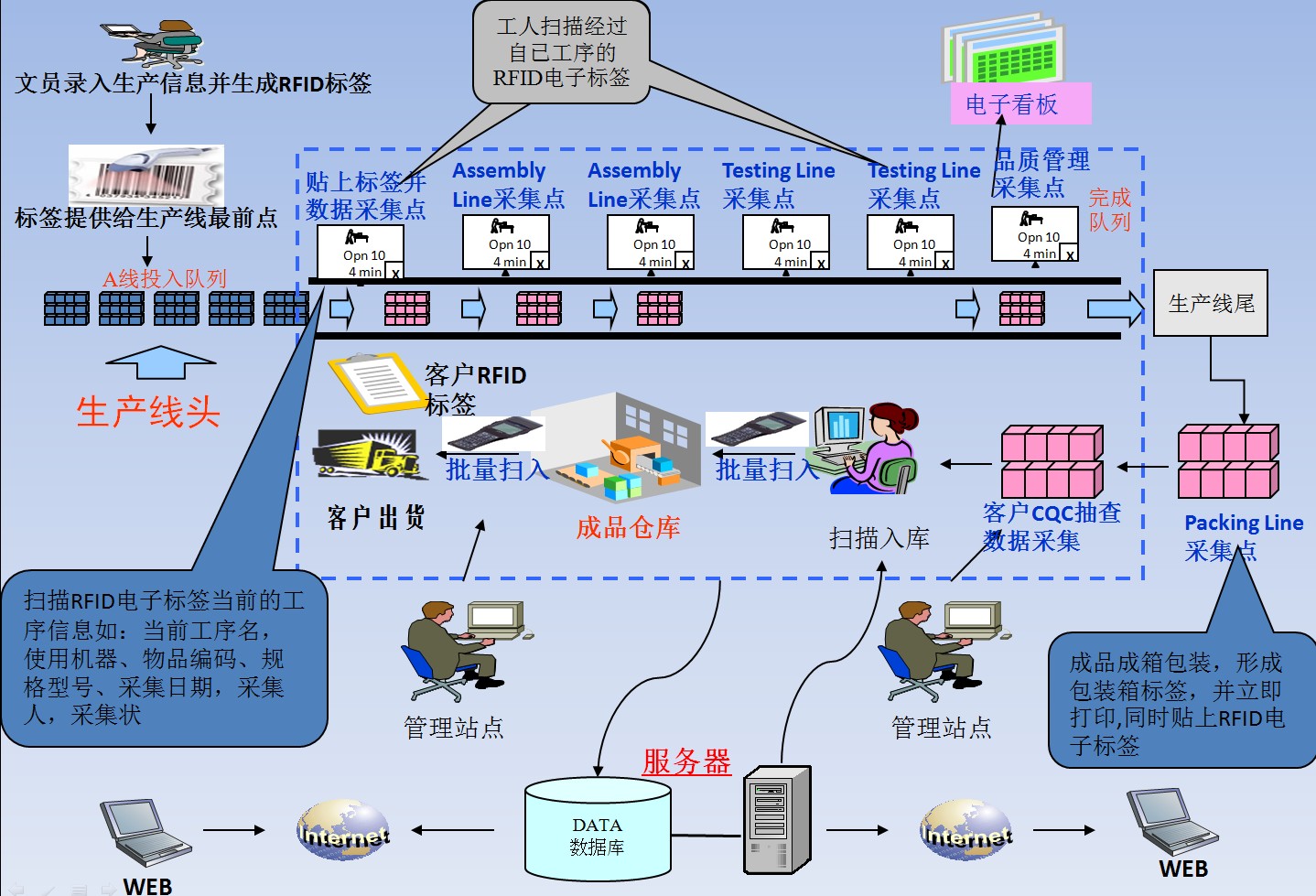
Handheld PDA scanning parts and raw material RFID electronic tags, bound to the production work order. After the finished product is completed, the handheld scans the finished RFID electronic tag to establish the correlation between raw materials, semi-finished parts, finished products and work orders.
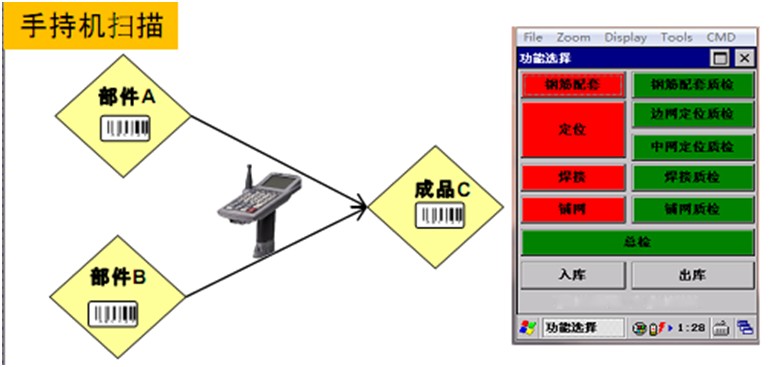
(3) Quality control is clarified
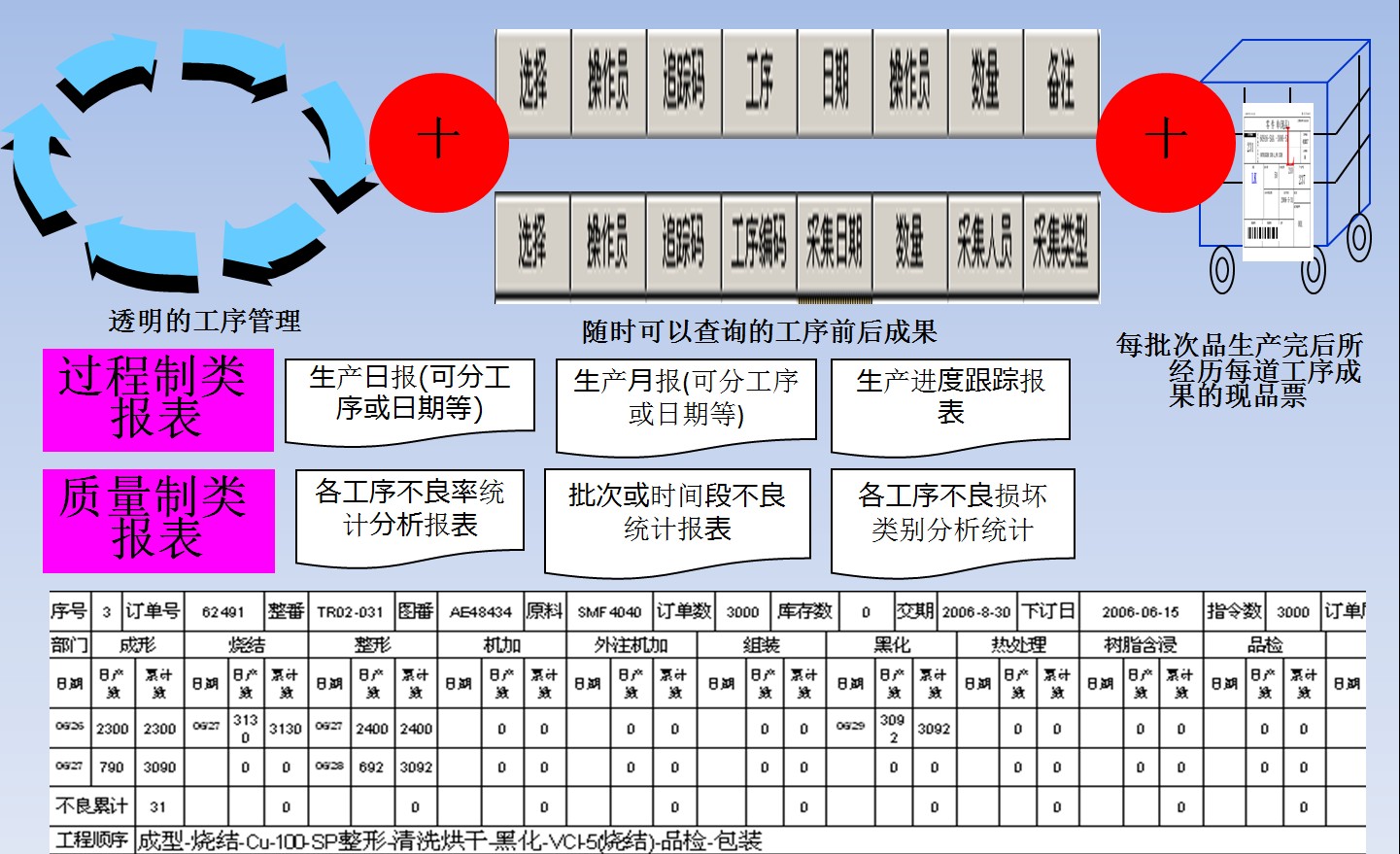
(4) On-site raw material circulation
When SMT is converted, the surplus material can be transferred to other work orders for continued use, and the process is as follows:
Disassembly – PDA residual material calculation – on-site marking – transfer to the new work order for feeding. If you do not need to go to a new work order, you can also return to the raw material library through the backflush order, which belongs to the scope of supply chain management.
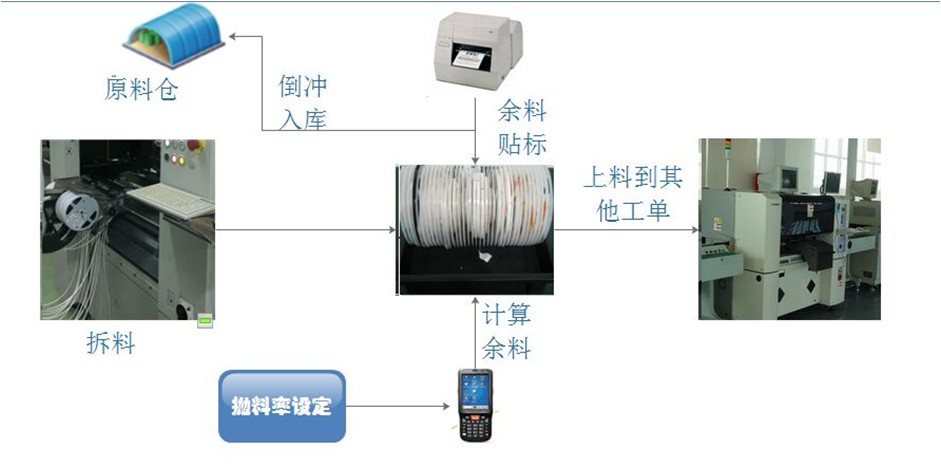
(5) Controller manufacturing process
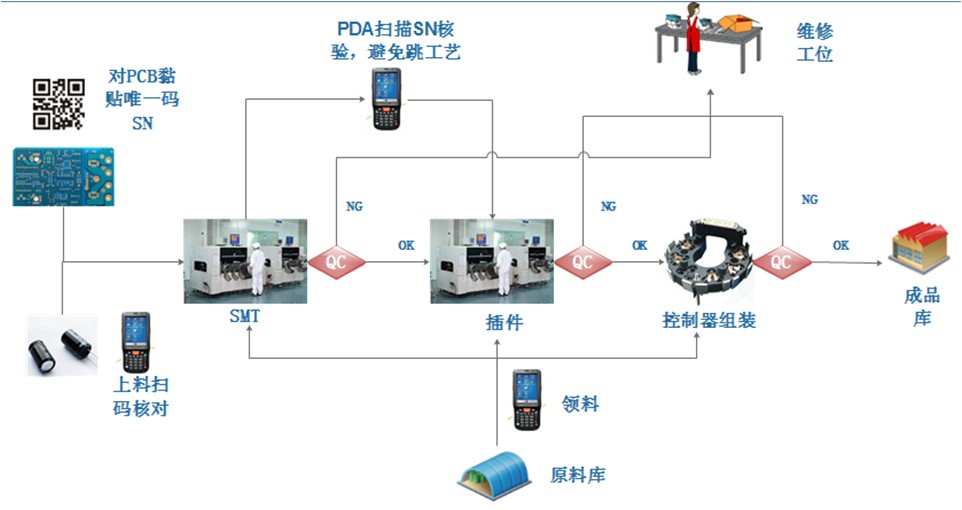
4. Inspection and maintenance
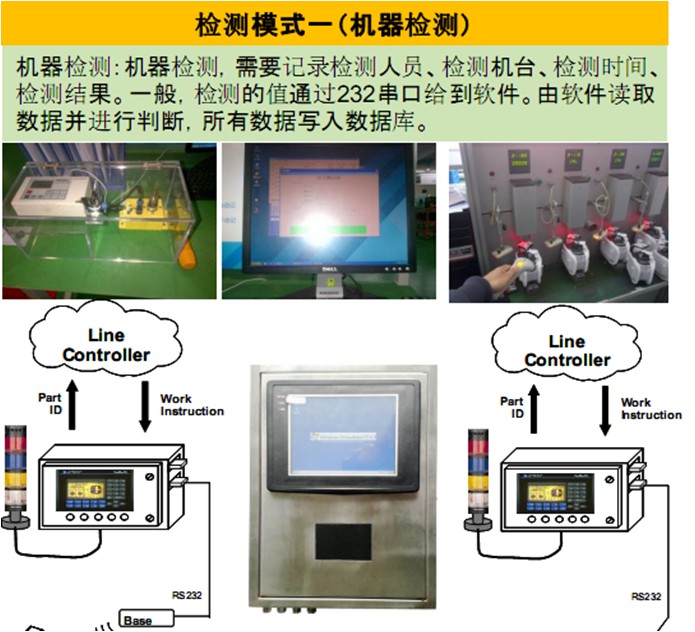
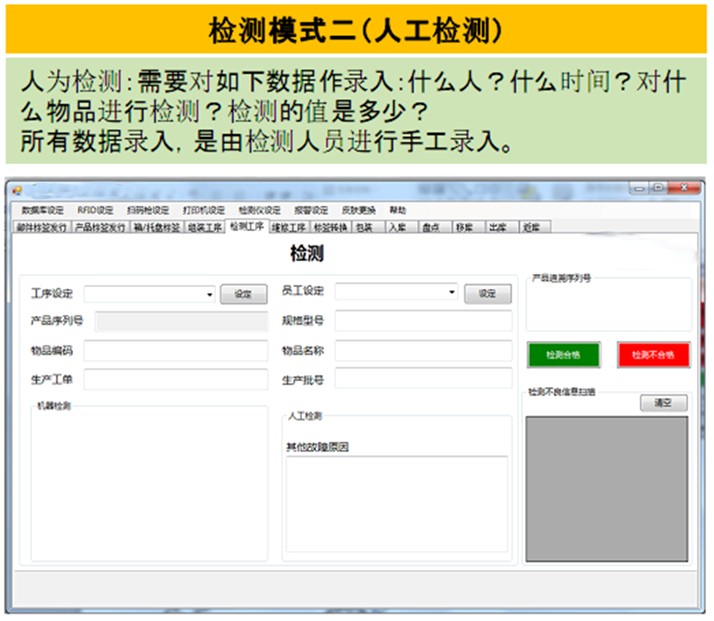








InfoAsia Việt Nam trở thành nhà cung cấp dịch vụ phần mềm số hóa nhà máy sản xuất cho thương hiệu giày hàng đầu thế giới NEW BALANCE
Công ty TNHH Mây Tre Hà Linh
SAP ERP MES and IOT Project for FVIV Factor
Buwon Industry Co, Ltd
KANGLONGDA VIETNAM PROTECTION TECHNOLOGY COMPANY LIMITED
Shini Group
TA TING PLASTIC (HAI DUONG ) CO., LTD
CÔNG TY TNHH MTV BIÊN HOA SCM